In my Italian class this summer, we’re reading our way through Italian journalist Aldo Cazzullo’s book of interviews with 70 Italiani Che Resteranno — or, 70 Italians (drawn from the last three or four decades) who will remain (in the history of Italy), whose work will continue to influence Italian (and global) culture. For our first reading assignment, my small group read the interview with celebrity chef and social-justice visionary Massimo Bottura. I’d already seen the Chef’s Table episode featuring Bottura, but was happy to learn more about his work, his family life, and his culture-renewing philosophy.
If you haven’t seen that episode, or if it’s whetted your appetite for more information about this chef, you might enjoy this BBC video which gives Bottura a chance to talk about his philosophy (connections between Food, Life, and Art), limns the importance of family in his life, the way he integrates his personal and professional life — particularly regarding his son’s work in a tortellini-making workshop for young people with disabilities. It also focuses on his push to make community kitchens around the world a normal response to calls for social justice. For more about these kitchens, you might want to read these articles (here and here) about his work at the Milan International Food Fair and at the Rio Games.
In these community kitchens, Bottura uses (or teaches others to use) food that often otherwise goes to waste, recovering the practices, as he says, of our grandmothers, and translating them for contemporary results. In Cazzullo’s article, Bottura speaks of making carbonara for 2000 at his restaurant for street people. Finding he only had enough bacon (and yes, I know, never bacon in carbonara, guanciale or pancetta only, but Bottura uses the word “bacon” in the midst of his Italian, and he has enough street cred that I’m not arguing 😉 for two portions, he cut it very fine and augmented it with banana skins which he boiled, then grilled, then toasted in the oven. . . performing a kind of contemporary twist on the Loaves and Fishes.

Capri Batterie, Joseph Beuys, 1985
But something else in that interview initiated this post. Bottura speaks of his interest in Contemporary Art, and Cazzullo writes that Bottura’s methodology is synthesized from a work of Joseph Beuys, seen in the entrance to the restaurant: a lemon, a light socket, a light bulb (Capri Batterie, 1985). Or, as Bottura explains, Nature, Technology, Poetry. . . or, Primary Material, Technique, Creativity. He repeats Beuys’ assertion that “We are the Revolution” (“La Rivoluzione Siamo Noi”). Music, Art, Writing, filtered through the contemporary brain, and he goes on to offers examples of how his culinary art models this precept. (Proviso: my summary of this part of the interview rests on my own translation of the Italian. But I think I’m pretty close.)
Obviously, much more could be said about Bottura, his cooking, and, particularly his work with Food for Soul. What impelled me to write, though, was the mention of Joseph Beuys. Not because I knew anything about him already. The opposite, in fact. I had to look up his name, and when I did, my Google search brought up the usual abridged Wikipedia result on the top right of my screen, describing him as “a German artist, teacher, and theorist of art who was highly influential in international contemporary art in the latter half of the 20th century.” The entry also says that Beuys “is a founder of the art movement known as Fluxus, and a practitioner and exemplar of happenings, and performance art.”
Reading around a bit, I see that this claim to him being “a founder of . . . Fluxus” is arguable, but that’s not my concern here. My knowledge of art history is limited, and all that I knew, when I saw the name “Fluxus” was that I had seen it somewhere before. A bit of sitting with the word, then a bit of riffling through my memories, and I had another name, although it took a few guesses before I remembered and spelled it closely enough to be able to do a useful Google search: Takako Saito. And yes, Saito (born in 1929) is a Japanese artist, and the Wikipedia entry confirmed my vestigial memory by noting that she is “closely associated with Fluxus, the international collective of avant-garde artists that was active primarily in the 1960s and 1970s.”
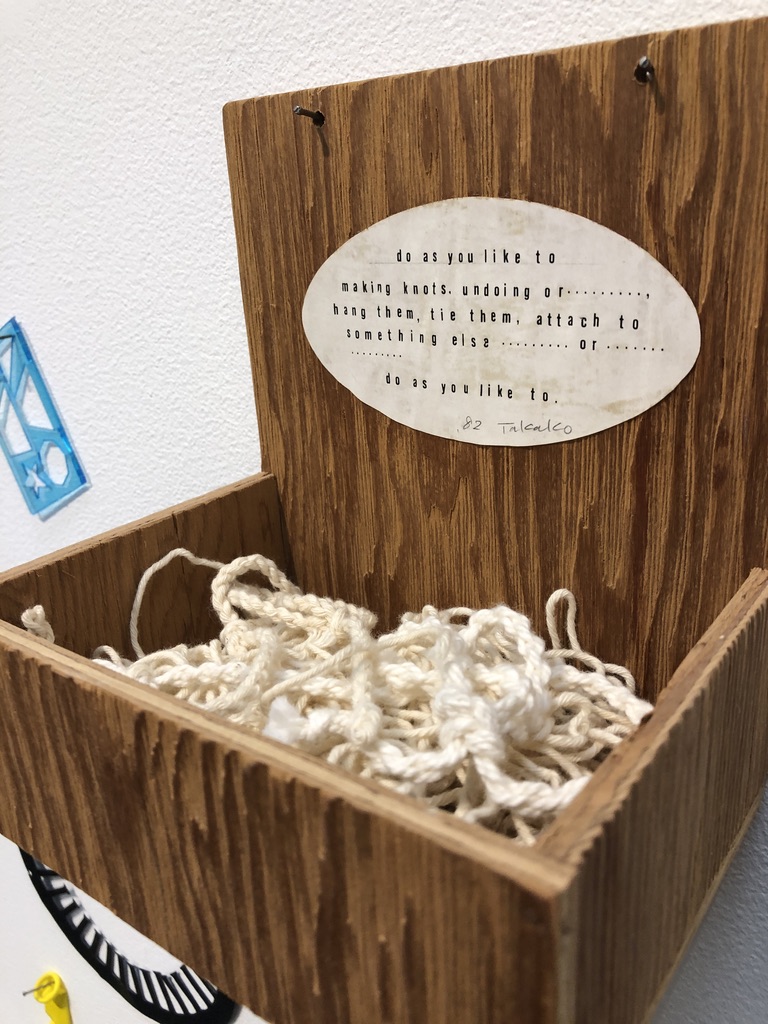
One of the projects I’ve been intending to get to is compiling some kind of timeline of the artists whose work I’ve seen in various exhibitions. Actually, the project would have to comprise two timelines, I think. One to map the chronology and the inter-relationships of the various artists and their movements or schools, and the other simply to remind me of when and where I saw each exhibition. I took a very small first step toward this last fall by getting years’ worth of travel and other journals together and adding simple indexes to the cover of each. And what this system told me this week is that I never did get around to finishing the Bordeaux June 2019 entries in the Haarlem-Paris 2019 Journal. Shame. Shame and Frustration.
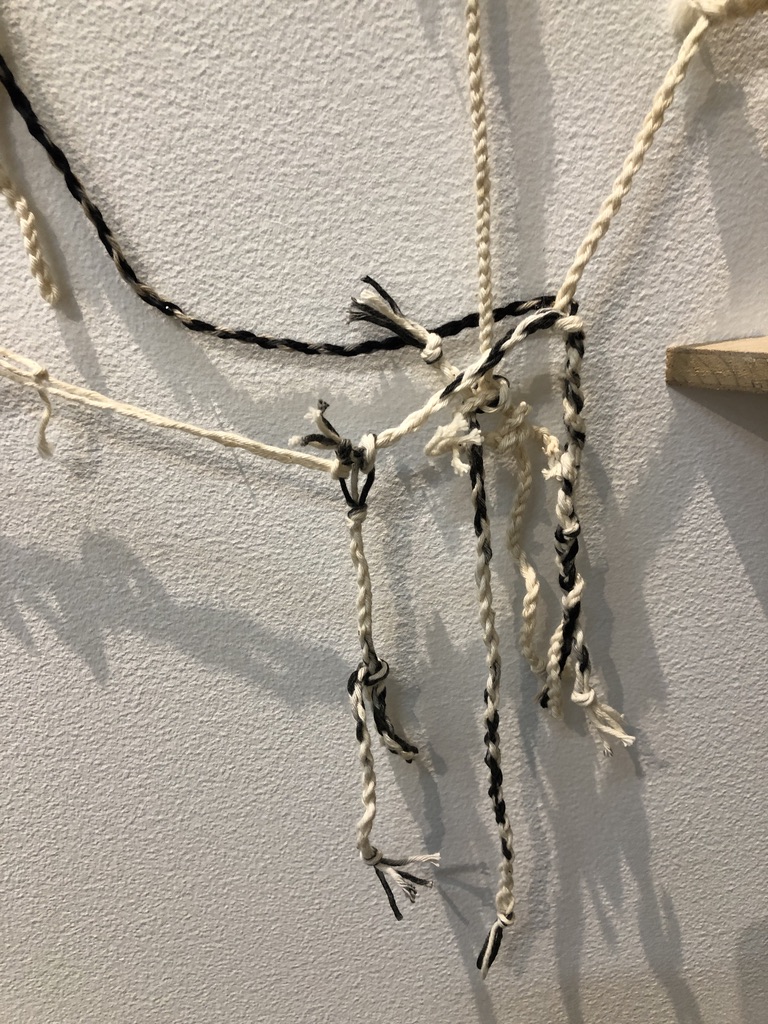
I did take many photographs of the work, though. Some of them I shared on Instagram at the time — a series of shots of Saito’s playful Chess School for Mice, another post with a few other riffs on the chess theme. And I also posted on Instagram that day photos of the museum that hosted the Saito exhibition: Bordeaux’s gorgeous Musée de l’Art Contemporain, a beautifully restored former warehouse. But if you only click through to one of my Saito-exhibition Instagram posts, please make it this one for the video of some interactive art, hands-on. . . Pater makes a cameo appearance. . .
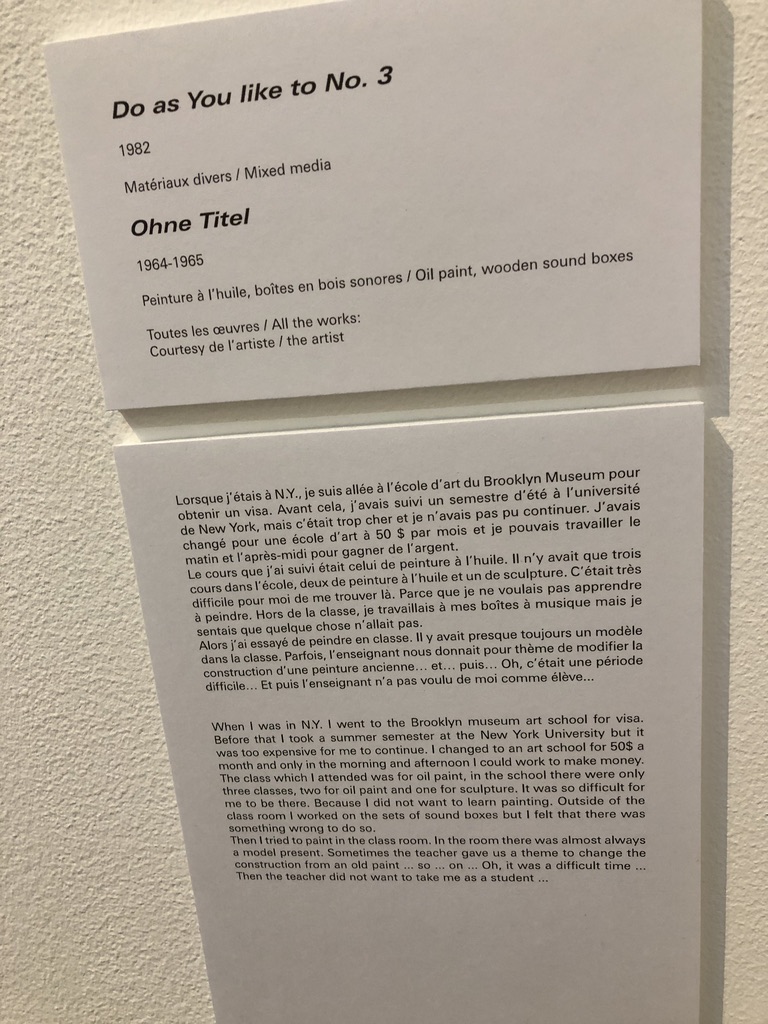
The brochure I brought home from that 2019 exhibition of Takako Saito’s work at CAPC Musée de l’Art Contemporain de Bordeaux traces the artist’s career from her work as a teacher in post WWII Japan when her dedication to “defend[ing] free will, individual creativity, and artistic training,” meant a commitment to “keeping abreast of the avant-garde activities of a fast-changing Tokyo .” Already, then, her artistic interests and practices ranged “from printmaking to painting, from calligraphy to games.”
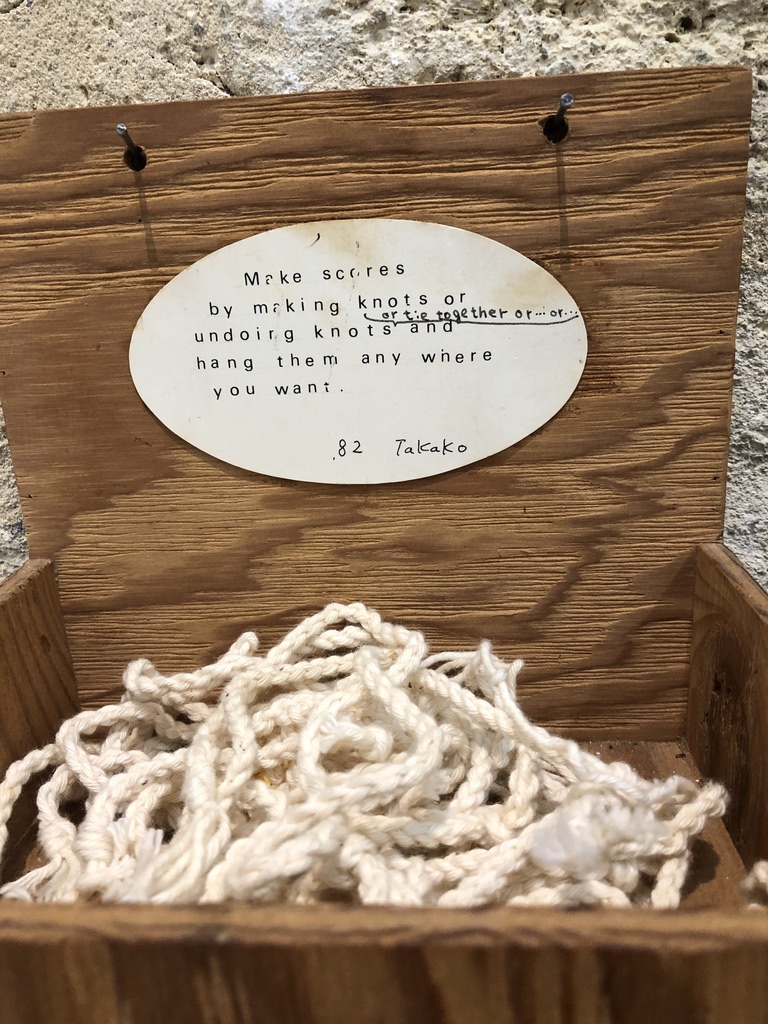
Reading around with the help of my browser, I learned that Saito became friends with the Japanese avant-garde artist Ay-O — who moved to New York City in the late ’50s and was introduced by Yoko Ono to George Maciunas. . . . so that when Takako Saito herself arrived in New York in 1963, she, in turn, met Maciunas and became involved with the Fluxus group. As the CAPC brochure puts it, “the group’s concerns chimed perfectly with her own philosophy, in which performance and play are central elements” She “never claimed to be part of the Fluxus family,” and although she “participated in the design of FluxBoxes,” the curators of the Bordeaux exhibition note that “she also produced much more personal pieces, crafting each object with elegance, precision, and humour.”
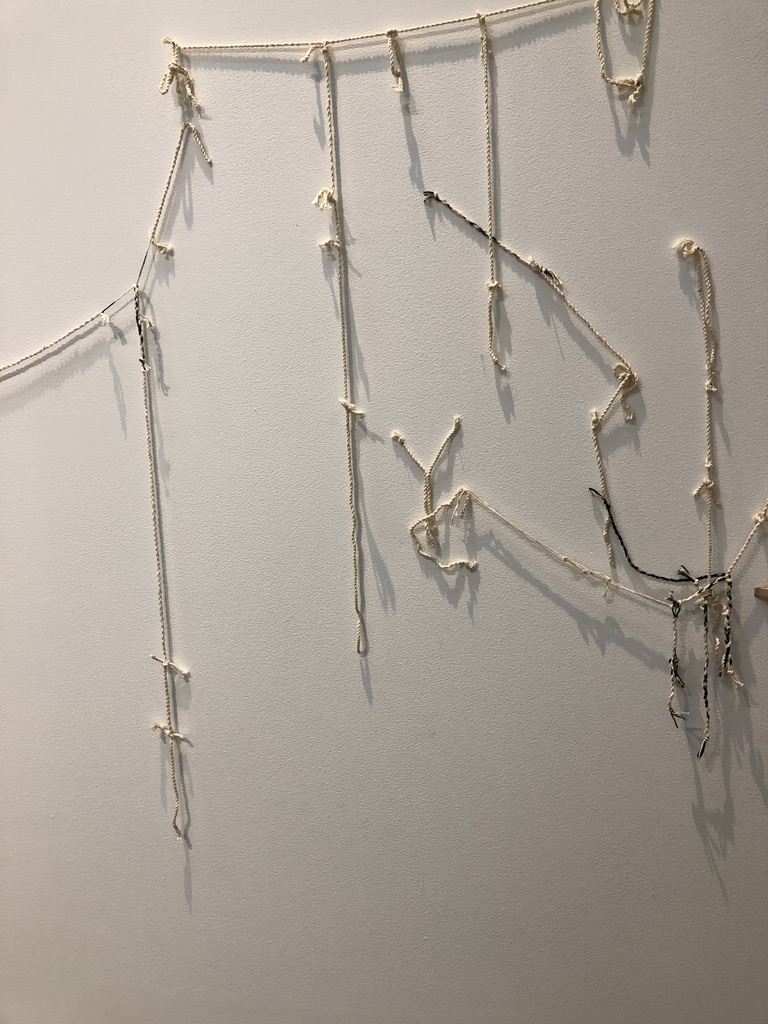
And this mixture — elegance + precision + humour — is precisely what struck us as we moved through that exposition over two years ago, and what I hope you’ll be able to see in the photos I’m sharing here. After connecting the dots that brought me from Bottura to Beuys to Fluxus to Saito, I’m disappointed to find a dis-connection in my own journalling of Saito’s work. As it turns out, I took copious photos, posted a few words on Instagram (as you’ll see in the links above), grabbed a brochure which I’d intended to include in my travel journal, but apparently never found time to jot down my own impressions.
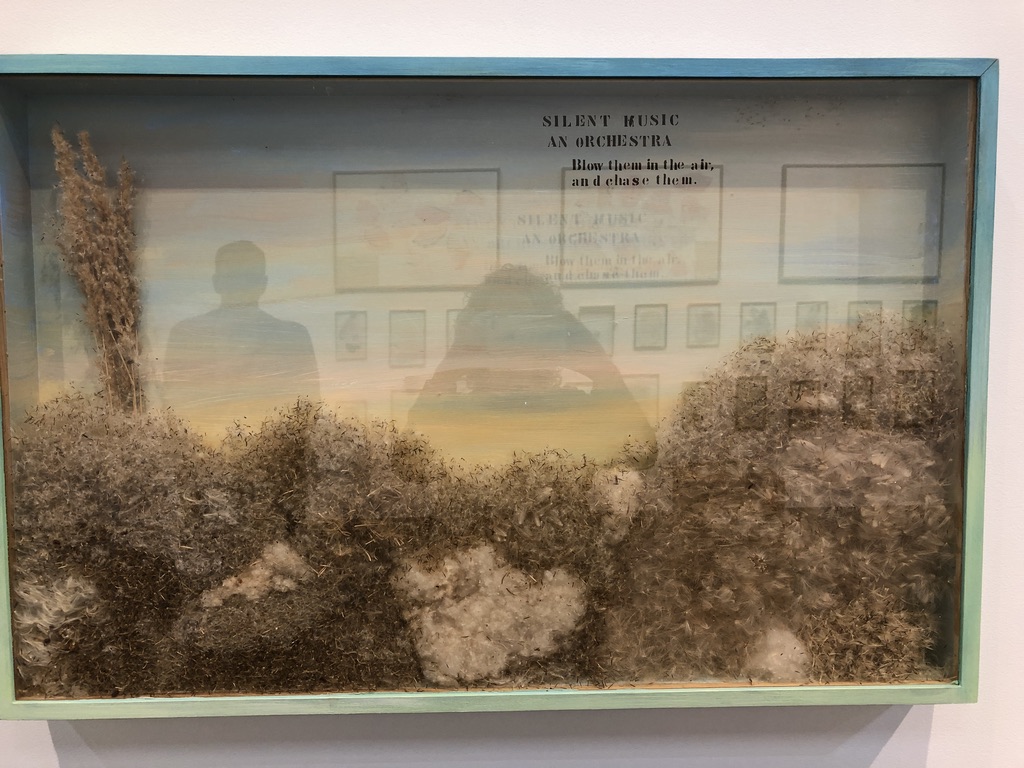
This shadow box is filled with a “landscape” made of seeds that fly (dandelion, etc). See Paul and I in the reflective glass. . .
I remember already being frustrated at the time that I wasn’t keeping up with the written impressions I like to keep for myself — and I knew that was because I was keeping at least one journal too many as well as trying to post here occasionally (here’s a link to those posts, if you haven’t seen them already or don’t remember them) — and the Instagram!! Okay, it sounds goofy now, too much, too many directions . . . but on the other hand, we were “Slow Travel”-ing then, in Bordeaux for weeks, and the writing and sketching and photographing were welcome creative outlets. And, obviously, I gave myself permission to set them aside in favour of eating oysters at the market, walking along the river, cycling to nearby towns, and checking out art expositions. . .
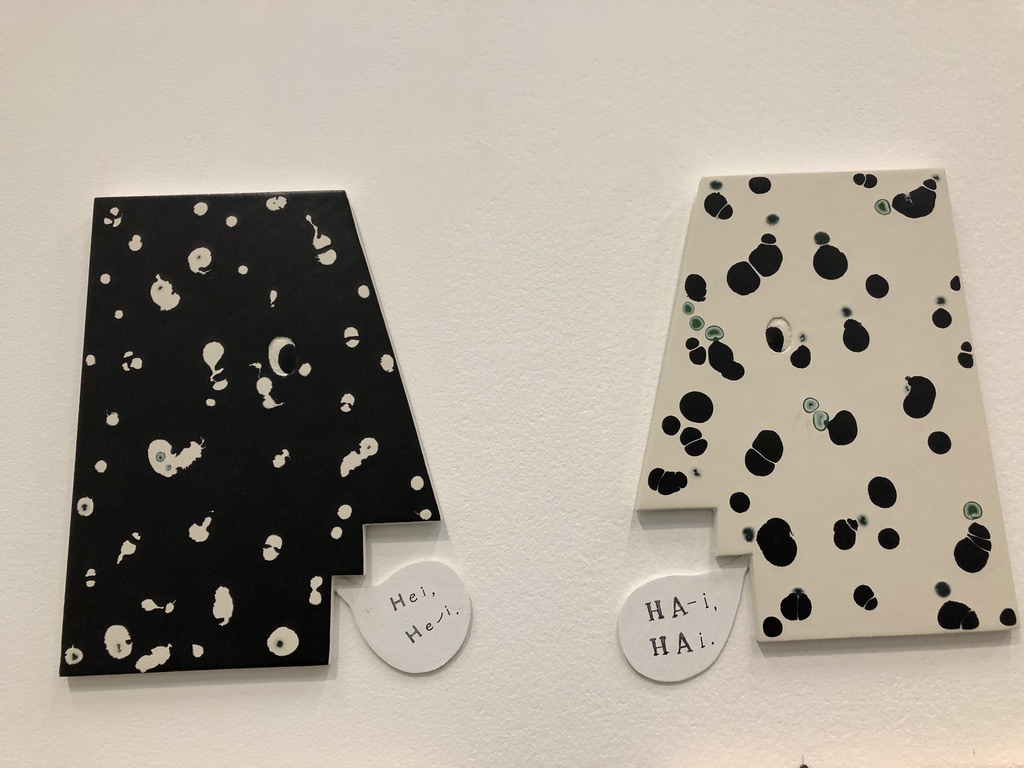
So many whimsical representations of faces in this retrospective exhibition. I loved their deceptive simplicity.
Still, as I begin dreaming of travel again, I’m reconsidering how I want to capture my impressions of other places, in both words and images. What papers/journals/sketchbooks, which media (watercolour? ink? pencil crayons?) and writing/drawing tools are most versatile, affordable, packable? Will I combine sketch and journal entries in one book or will I continue being loath to “waste” space on expensive watercolour pages for long paragraphs that could more affordably be written on lighter paper?
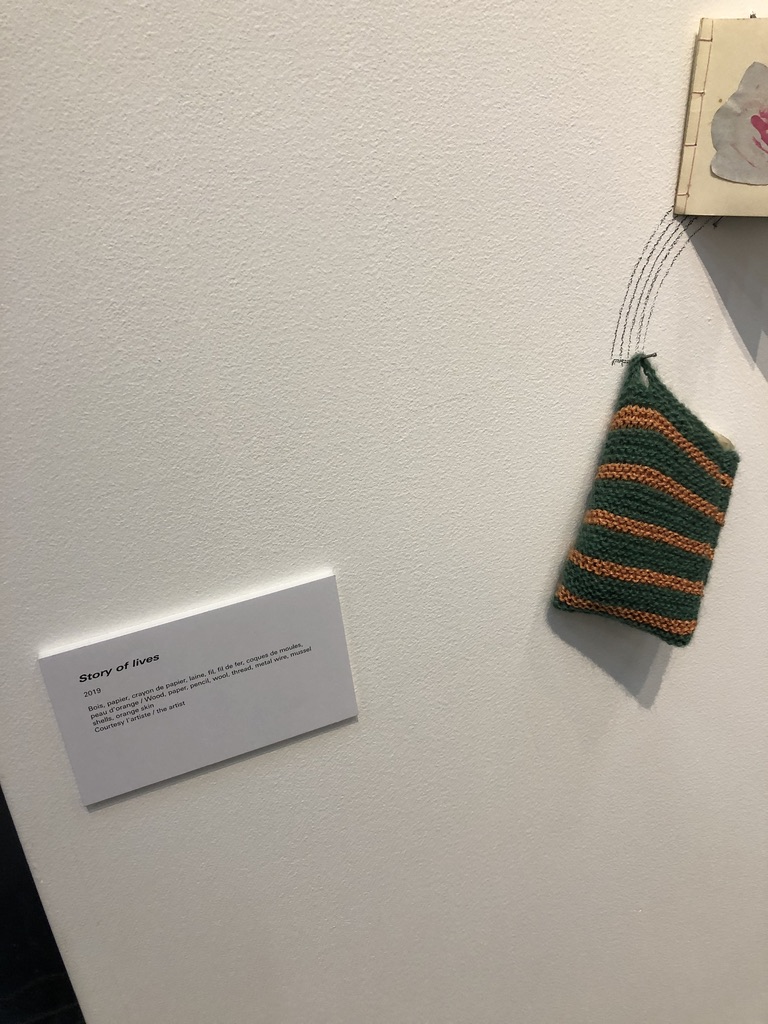
This photo and the two below trace a work — Story of Lives — that was probably put together for this exhibition, as it’s dated 2019. The work begins to the right of the plaque and can be read for its “story” as it moves along the wall. . .
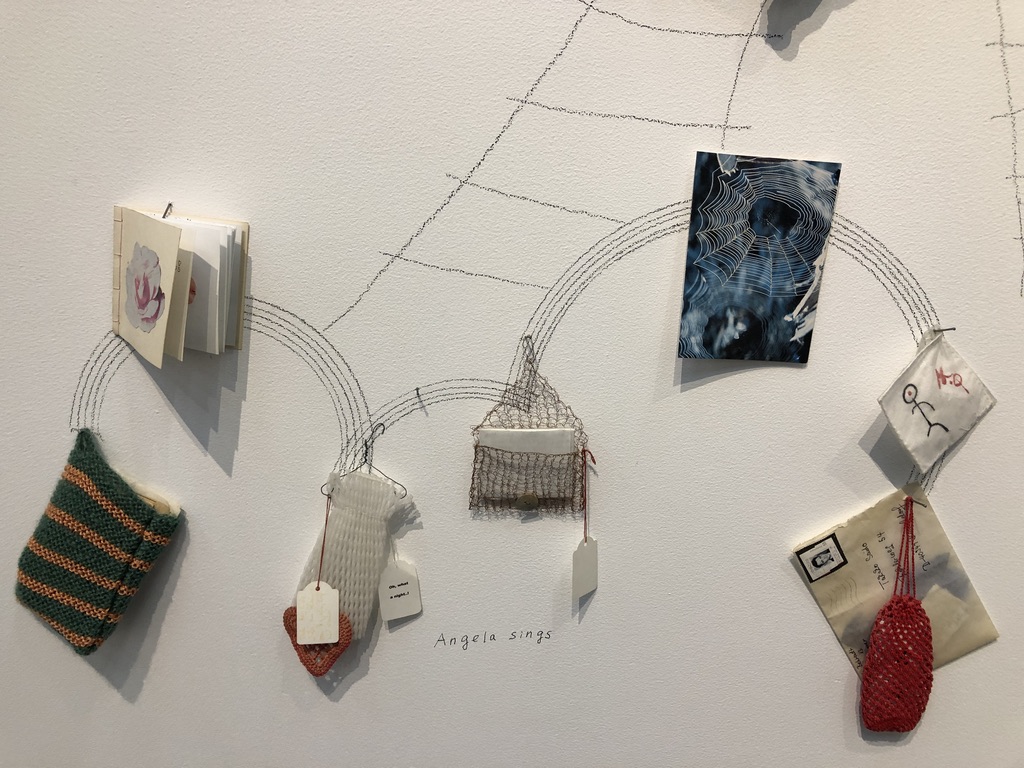
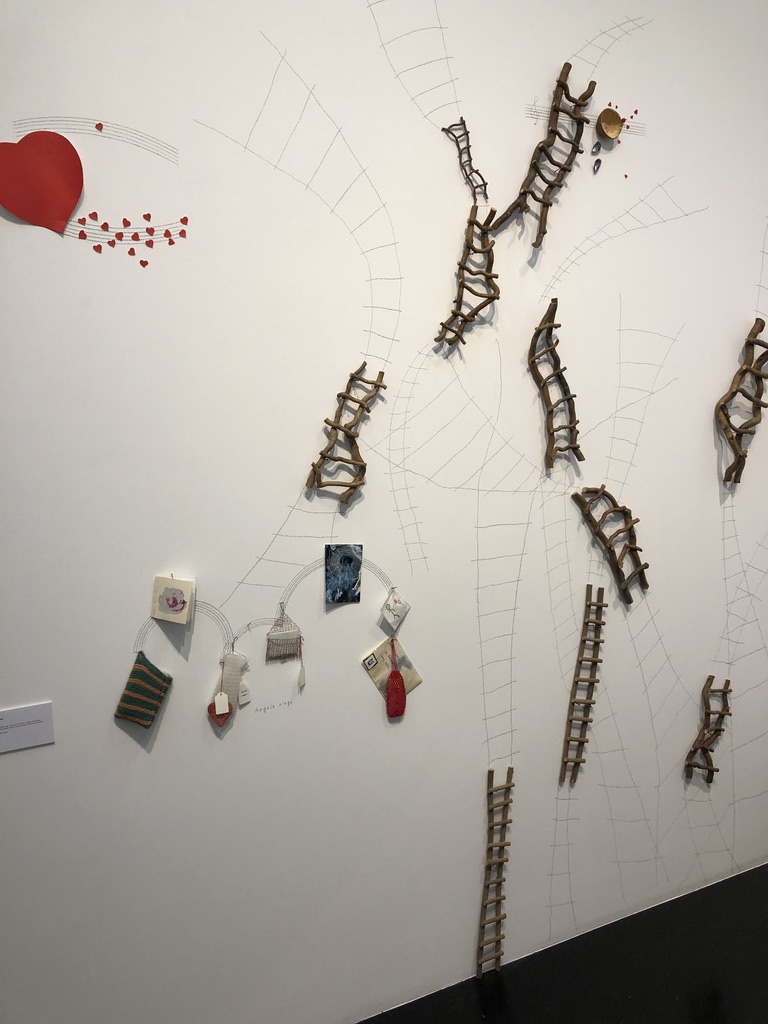
I hope my photos convey some of the aesthetic delight of this work, of all the works in the exhibition. Yes, the work is “avant-garde,” “conceptual,” — labels which can push some potential viewers away. But Saito’s work is so often exquisite, precise, elegant, as well as being delightfully whimsical. I think some of the appeal, for me, is the evidence of time in the work, of the artist’s skill and talent, but also of her labour . . . which evidence of labour, though, never detracts from the work’s lightness, its sense of play.
And while I’m still home, waiting and dreaming, I’m finally digging into that project I mentioned above, sorting out a timeline of exhibitions I’ve seen. . . which has already led me to organize my travel journals . . . and, in turn, got me thinking of possibilities for future posts. If, that is, I can pull myself away from the imaginary and remembered travels those pages conjure.
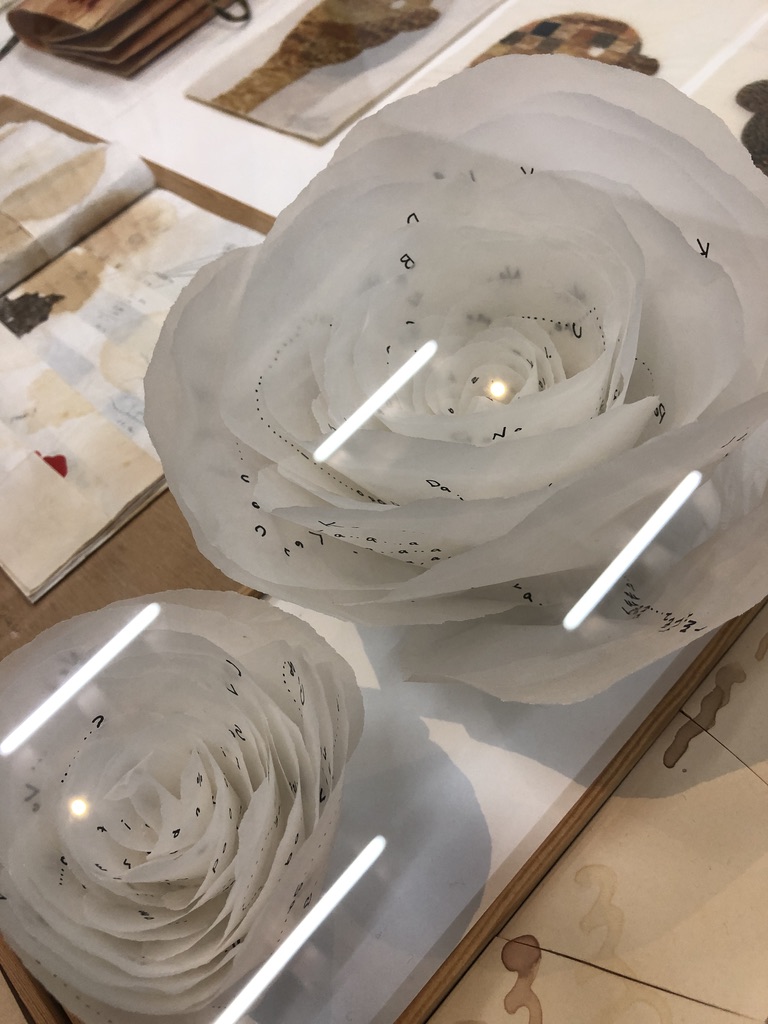
Excuse the reflection of the ceiling lights caught in the protective glass case I had to photograph through, but these flowers captivated me, the intimacy and intricacy of their layers of letters, wordplay, patterns on the beautifully translucent paper. . .
In fact, I’ll leave you now to browse that Bordeaux exhibition of Takako Saito’s work through my photographs. (Edited to add: Just added one more Instagram post, which includes 10 more photos of Saito’s work, not shown here) . . I’m heading back to 2009 now, to London via one of the Moleskine journals in my newly organized collection of travel memories. . . . Who knows what dots that will have me connecting, what breadcrumbs I might follow. . .
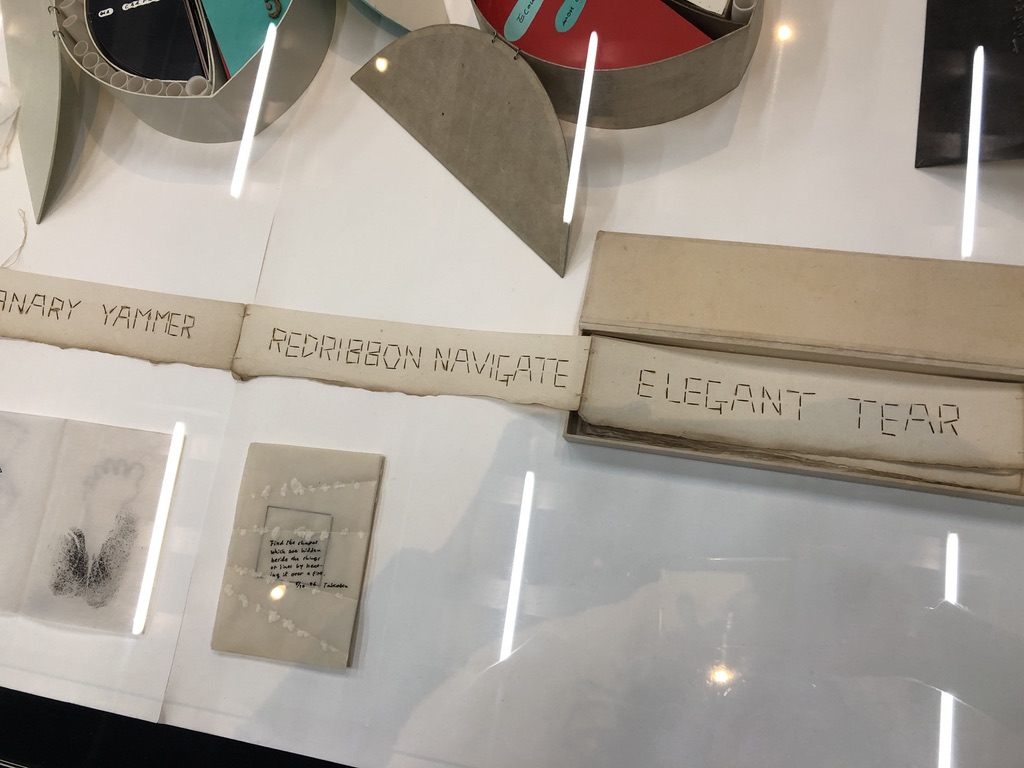
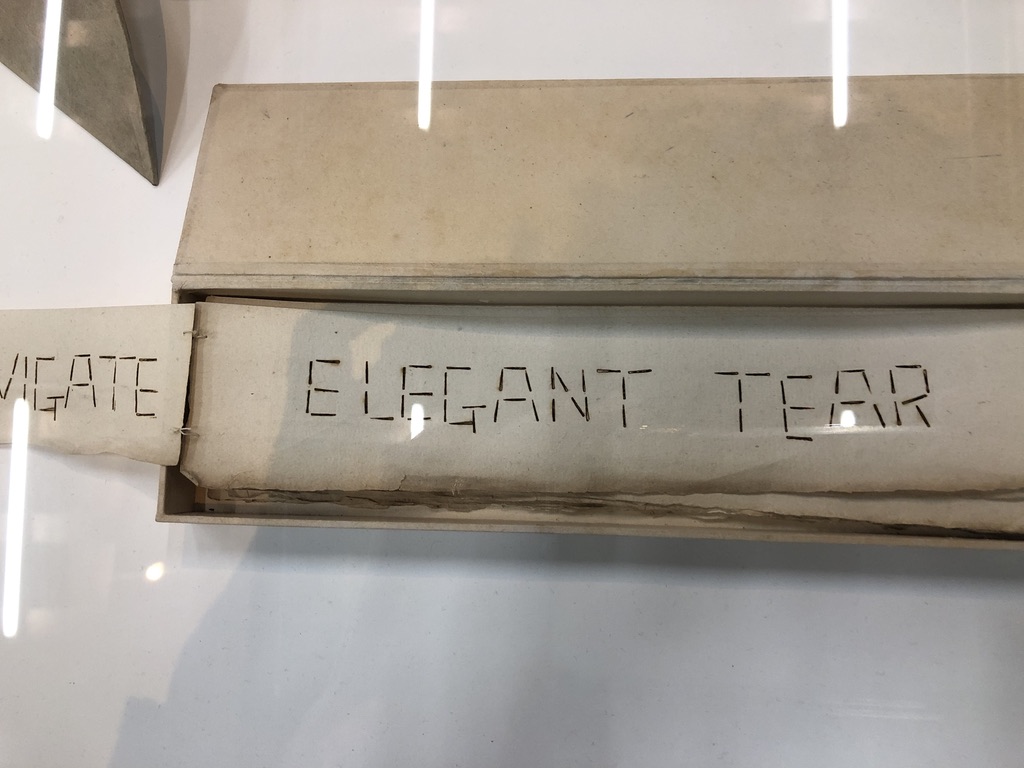
The process of synthesizing our experiences, integrating our memories, filtering our recollections through more recent understanding, making new connections, has long fascinated me. I hope you’ve found something to interest you here as well, this Saturday morning — and perhaps the connections I make will trigger some for you. If that’s the case, I’d love you to share those in the comments below.
xo,
f
p.s. It’s raining here today, as it rained last night — the first measurable rain we’ve had in something like 45 days. Such a relief, and we’re all hoping there might be enough to make a difference to the wildfire situation in BC. Fingers crossed. . .
Such a rich and thoughtful post, Mater, that provides much food for pondering the connections in my own life and travels. Saito’s work has a simplicity that belies the depth of thought behind it.
Wasn’t the rain wonderful?
Author
Thanks, Lorrie! I’m so pleased you enjoyed the post and can easily imagine you enjoying that exhibition in Bordeaux.
The rain was magic! I only wish we could have more. . .
Such a rich, thoughtful post. I love Chef’s table, and Bottura, at least as I have seen him there and on a few segments in other places. I will follow up your links. But mostly I love how you take his ideas, or this glimpse into his ideas and explore them, connecting them with your own experiences to create a path both new and yet linked, somehow like Saito’s work, and yet different. Ahh the shifting perspectives of our humanity: touching, intersecting, wandering.
Author
Thank you so much, Mardel! I know you make these kinds of connections yourself and I’m pleased that you found my wandering path worth following through the post.
The whole process of following breadcrumbs, as you say, fascinates me. The kids in my writing class used to do a project I called “The Nature of Creativity” in which they tried to convey their own creative process through any medium that was not an essay. One year two kids teamed up and created a mural in our classroom. On heavy brown paper tacked to the wall, I should add. The teacher I shared the classroom with was not amused that the blackboard on the side wall was unusable for writing notes for a couple of weeks. 🙁 And I find that even after eight years of retirement, modern art always makes me think of how I might use it in the classroom. Imagine taking a class to see that Saito exhibit! You could spend all day wondering what is in those tiny bags and booklets. 🙂
Author
What a cool project for your students! I think there’s so much about contemporary art that gets our systems of perception working in lively ways. And I’m sure a class would have lots to write about after visiting the Saito exhibition.
Your post brought up many thoughts. one being that it has been far too long since I have been to a museum exhibition. I was prompted to see if a local museum was open again. naturally it had been closed for the pandemic and also it was undergoing a major expansion. I can remember the days when it was just a small place displaying the flora, fauna and ecology of the local area. A few years ago I attended an exhibit of Alfred Sisley. the only one in the region. At any rate, they are open, though of course you must make a reservation. The two main exhibits seem to be interesting and provocative. One is photographs showing the results of the production of nuclear weapons, the work of a Japanese American who is the child of parents who were in an internment camp during WWII. The other exhibit is on the Amazon rain forest and the situation there at present. I will be making my reservation.
Sadly, another wonderful artistic experience remains closed. The Donald Kendall Sculpture Garden, on the grounds of the world wide headquarters of a major corporation. Minutes away from me. It was not open to the public for several years while the buildings were undergoing renovation then it was only open on weekends for while and then covid hit. It has works by such artists as Calder and Henry Moore. Amid lovely gardens, a small lake. I fondly remember taking my grandchildren here when they were small. Now of course they tower above grandma. Hopefully it will open again soon.
Author
I’m yearning to go to an exhibition as well — we’ve been lucky in that a few of our local museums have put on interesting but smaller, more focused exhibitions (some based on the museums’ own collections) throughout the pandemic, and we’ve been able to visit, masked, by appointment (to allow for physical distancing). But I haven’t been since the fall (a Victor Vasarely exhibition combined with Op Art from the local Vancouver scene) and I think it’s time. That Sisley you got to see a few years ago would suit me well 😉 Too bad about your Sculpture Garden. I hope you get it back soon — we need these doses of beauty “on the regular,” as they kids say.
Boy, do I miss museums! DH and I have been known to fly across the country to see art (our first trip to NY together was to see a fabulous Van Gogh retrospective), and to change plans around once we’re in a city and discover something that sounds fun (Dallas/Ft. Worth for a Gustave Caillebotte exhibit led to a *fantastic* show of International Pop art – we’re so conditioned to think of Pop as a primarily US movement, but the way it was interpreted around the world taught me so much). There’s an Ai Wei Wei opening in Lisbon soon that I’ll want to see, and I’m hoping for Paris soon (maybe for Jeanne-Claude & Christo’s Arc de Triomphe, wrapped? That would be wonderful, if the plague subsides enough).
I’m of the Use the Good Stuff school – I say use your good watercolor journals to make notes as well. Not only because future you will be happy to have words and images together, but because ars longa, vita brevis.
Author
Yes! So often it’s the interpretation inherent in an exhibition that makes it so interesting, as well as the work itself. Curation can be eye-opening, even paradigm-shifting. I remember one year when we were somehow able to see a grouping (small to large and career-spanning) of Miro’s work and were fascinated by the ways the narratives told by the three both cmoplemented and argued with each others. Plus the juxtaposition of the work with the architecture in which it’s displayed. Lucky you, now, so close to so many wonderful exhibitions — in another time I might have considered organizing a trip with that Ai Wei Wei show in mind!
Thanks for the journal feedback — it’s all helping me think through the next trip’s journal(s). . .